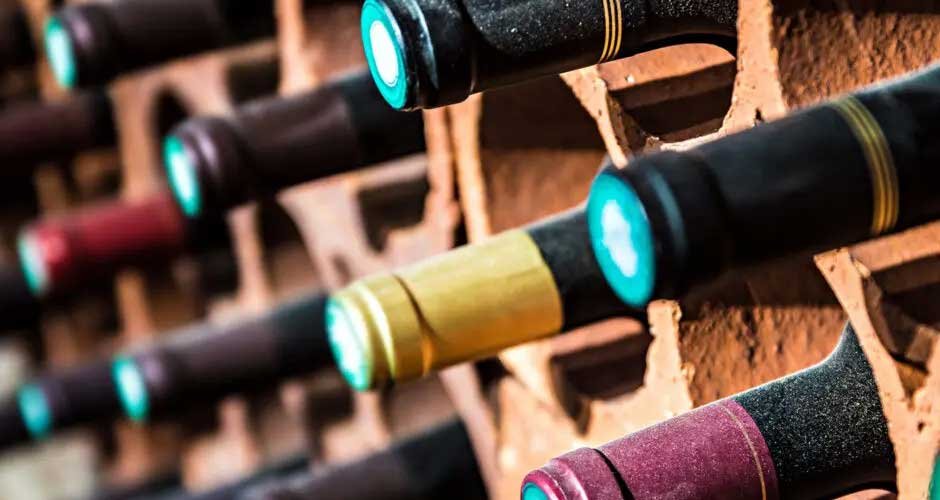A properly stocked cellar is a great usage for a basement space. There’s more to consider than simply how you’re going to stock your wine storage though. The appeal of a good wine storage is obvious to anyone who enjoys a glass of red (or white, rosé or any other colour). Having a handy place to keep your stock is a no-brainer for any serious wine fan.
Of course, one element that many forget to disastrous effect is keeping your cellar free from pests, molds and the effects of moisture. Wine, especially good wine, is an investment and taking measures to waterproof your basement can help protect it.
The Importance Of Waterproofing Wine Cellars
Wine, especially wine worth the storing, is sensitive stuff. It’s aged in very specific conditions to enhance body and flavor and deviating from them can cause problems. Unfortunately, this sensitivity is only slightly reduced once the wine is bottled.
Keeping a steady temperature allows you to prolong the shelf-life of your bottles, as does keeping exposure moisture balanced.
While most people focus on temperature and exposure to UV-light, moisture plays an important role too.
Problems which can arise from an unwaterproofed cellar include:
- Damp air can penetrate corks, allowing oxidisation of the contents
- Dry air can dehumidify corks, causing them to crumble
- Humid air can encourage mold growth, damaging shelves and bottles.
And of course, it’s harder to pick a bottle when all the labels are blurry or peeling because they’re damp.
The trick here is to balance the levels, just as you balance your wine pairings.
Assessing Your Basement For Wine Storage
Turning your under-home storage into a well-stocked cellar takes a little preparation before you pay your vintner a visit. The first step, as with any home project, is a thorough assessment of the current conditions.
Location and Current Conditions
Not every area of your basement will be suitable for wine storage. This is especially true for basements which contain appliances like furnaces or boilers. The ideal location will have the following attributes:
- Steady Temperature. This changes slightly between wines, but a good rule of thumb is that you want to be able to keep it at around 52-57o It’s important that the area never gets above 75oas it will start to oxidise around this point, ruining it.
- Controlled Humidity: the ideal humidity for wine storage sits somewhere between 60-80%. These conditions, neither to damp nor dry, will prolong the shelf-life of your wine.
To assess these conditions, you can employ a thermometer and hygrometer. Remember to take regular readings over a prolonged period to ensure consistency and that you have the full range of conditions.
Steps To Waterproof Your Cellar
Now that you have found a location which is consistently neither too hot nor cold, too humid or dry, it’s time to take steps to keep it that way. This is where waterproofing comes in.
A properly waterproofed space to store your wine brings many advantages:
- It’s easier to heat and cool: damp air means you’re heating or cooling the water too
- You can regulate humidity: not having to worry about water ingress gives you much greater control.
First of all, inspect your walls and floor. Any cracks will need to be filled before any other work can be undertaken. Next, consider your options for a vapor barrier. These can be installed easily and provide an effective method of keeping moisture from surrounding soil out of your basement.
Once the vapor barrier is installed, it’s worth considering insulating your cellar. This will allow you to more easily regulate the temperature conditions throughout the year.
Installing A Drainage System
Should your basement be threatened by standing water or excessive humidity and condensation, a drainage system is a good investment. There are two main types used in basement waterproofing solutions:
- French Drains: these horizontal drainpipes sit along the edge of your walls. They provide an easy, safe path for water to flow through, away from your wine racks.
- Sump pumps: if the problem seems to be coming up from below, installing a sump pump is the answer. When groundwater levels rise, they can threaten your slab flooring. A sump pump counteracts this by physically drawing this water through a discharge line before it gets too high.
Choosing The Right Materials
Of course, not every material will suit your purposes. It is vital that you select products which don’t release gases or have strong smells as this could affect your wine. It’s best to do your research or consult with a professional to ensure good results.
Climate Control Solutions
Climate control systems will allow you to ensure your cellar is kept within the ideal parameters. This will help you get the most out of your storage and ensure your wine is good to the last drop.
Temperature Controls
While likely cooler than the rest of your home, it’s unlikely that your basement will remain within the perfect range at all times. This is where cooling systems come in.
The most common systems mount through your wall, much like a window-housed AC unit, though your space may better suit a ducted unit.
Humidity Controls
Of course, keeping cool is only half the battle. With humidity being a prime culprit in spoiled wine and moldy cellars, keeping it under control is vital.
Dehumidifiers often allow you to set a target humidity. If the ambient moisture in the air rises beyond this level, they switch on and deal with it.
Conveniently, there are many specialist units which handle both these problems for you in a single installation.
Maintenance
As the aim of a wine cellar is to protect your investment in the long term, keeping up with maintenance makes sense. You should:
- Regularly visually inspect for signs of damp
- Monitor humidity
- Inspect barriers, especially around joints and seals
- Keep drains clear from obstruction
- Schedule regular professional inspections
On top of this, at the first sign of water intrusion, you should take action and consult a professional.







